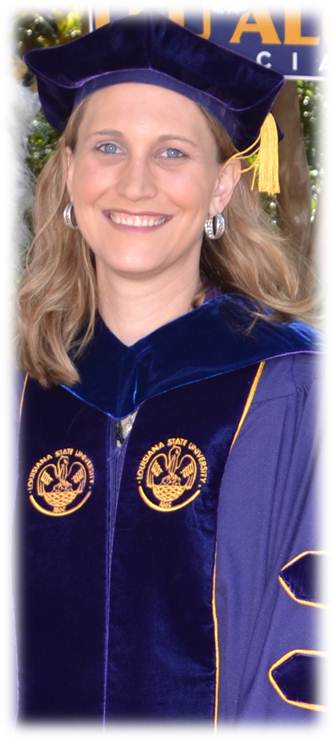
|
Employment: |
Present 2015 - 2020 2013 - 2015 2013 |
Program Manager at the
Coalition for Clean Air
in Los Angeles, CA Education Coordinator at the Aquarium of the Pacific in Long Beach, CA Education Specialist at the Aquarium of the Pacific in Long Beach, CA Marine Science Fellow at the Aquarium of the Pacific in Long Beach, CA |
||
| Education: | 2012 |
Doctor of Philosophy Degree
(PhD) from
Louisiana State University
Major: Department of Oceanography and Coastal Sciences Minor: Department of Geography and Anthropology (GIS concentration) |
|||
|
|
2005 |
Bachelor of Arts Degree (BA) from Hamilton College in Clinton, NY Graduated Cum Laude Major: Interdisciplinary Concentration in Environmental Studies Minor: Studio Art |
|||
|
Areas of Interest & Subject Keywords: |
Anthropogenic Stressors Biodiversity & Conservation Biomedical Social Sciences Caribbean Acropora corals Climate Change Computer & Information Technology Coral Reef Ecology Coral Disease Education & Educational Research Environmental Sciences & Ecology Environmental Education |
Geographic Information Systems (GIS) Imaging Science Infectious Diseases Marine & Freshwater Sciences Medical Geography Pathology Oceanography Spatial Analysis Spatial Epidemiology Sustainability & Sustainable Living Water Resources |
|||
|
My Early Years |
||
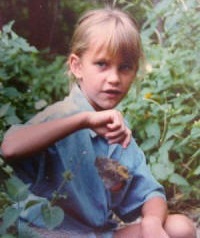 |
I was born and raised in Tucson, Arizona. From a very young age my parents instilled within me an appreciation for both Art & Science. During our routine nature hikes and camping trips, I was always encouraged to explore & question everything around me, while also taking time to appreciate the beauty of the natural world. I attended St. Gregory College Preparatory School for both Middle School & High School. In addition taking all of the required course work (usually taking the AP/honors versions), I also I tried to fill as many of my electives with Art classes as possible, as well as taking additional science courses over the summer. Senior year I was asked to make a commemorative bench to celebrate the school's 20th anniversary, while also teaching a small group of students how to tile & mosaic. My passion for both art & science intensified as I grew older, though for the most part these interests remained separate but equal. |
|
|
During a summer Tropical Marine Ecology course in high school my two passions intersected for the first time.
The course spent several weeks in Panama, during which time we were able to spend a few days staying in a remote Embera Indian village. The tribe we stayed with were one of the few remaining tribes that were both native to the area and virtually untainted by western culture. This was in large part due to the location of their village, which was deep inside the Chagres National Park. Most of our communication was with the village chief who spoke Spanish, and was the only bilingual adult in the tribe (the rest of the tribe spoke only their native dialect). Having taken only French in high school, I couldn't understand much of what was said, so instead I tried to document as much as possible in my field notebook. My sketches in this notebook caught the eye of Yalmilka, a 12 year-old girl who was known as the "artist" in the tribe. We spent the next few days communicating through pictures, such as the image she drew of her parents (shown below). 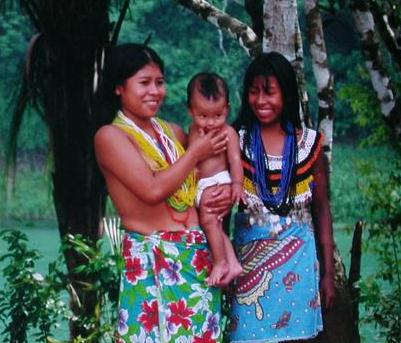 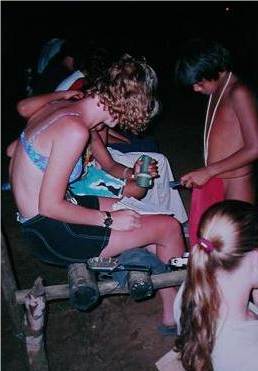 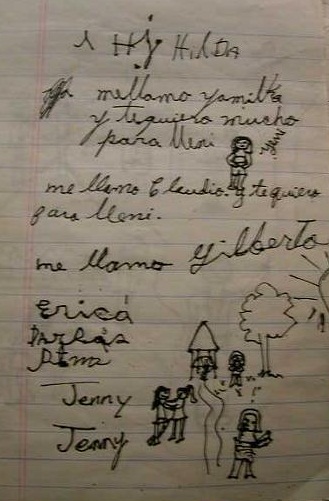 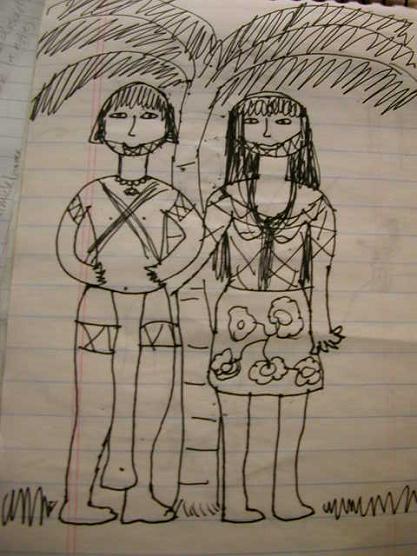  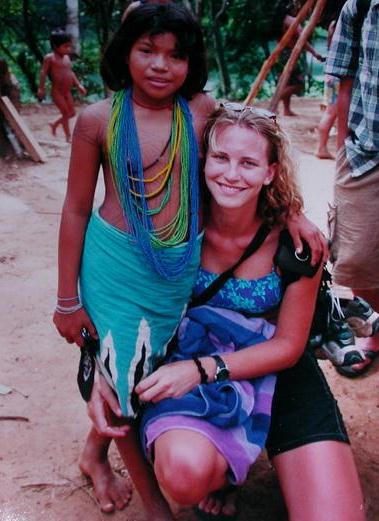
To this day, my time with Yalmilka remains one of the most meaningful experiences of my life. Since then I have done my best to try to incorporate both art and science into as much of my research as possible. In 2001, I received both Studio Art & Science Research Awards, graduating with High Honors. |
||
| Undergraduate Education at Hamilton College | ||
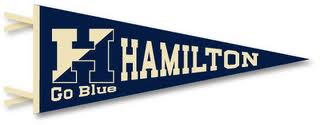 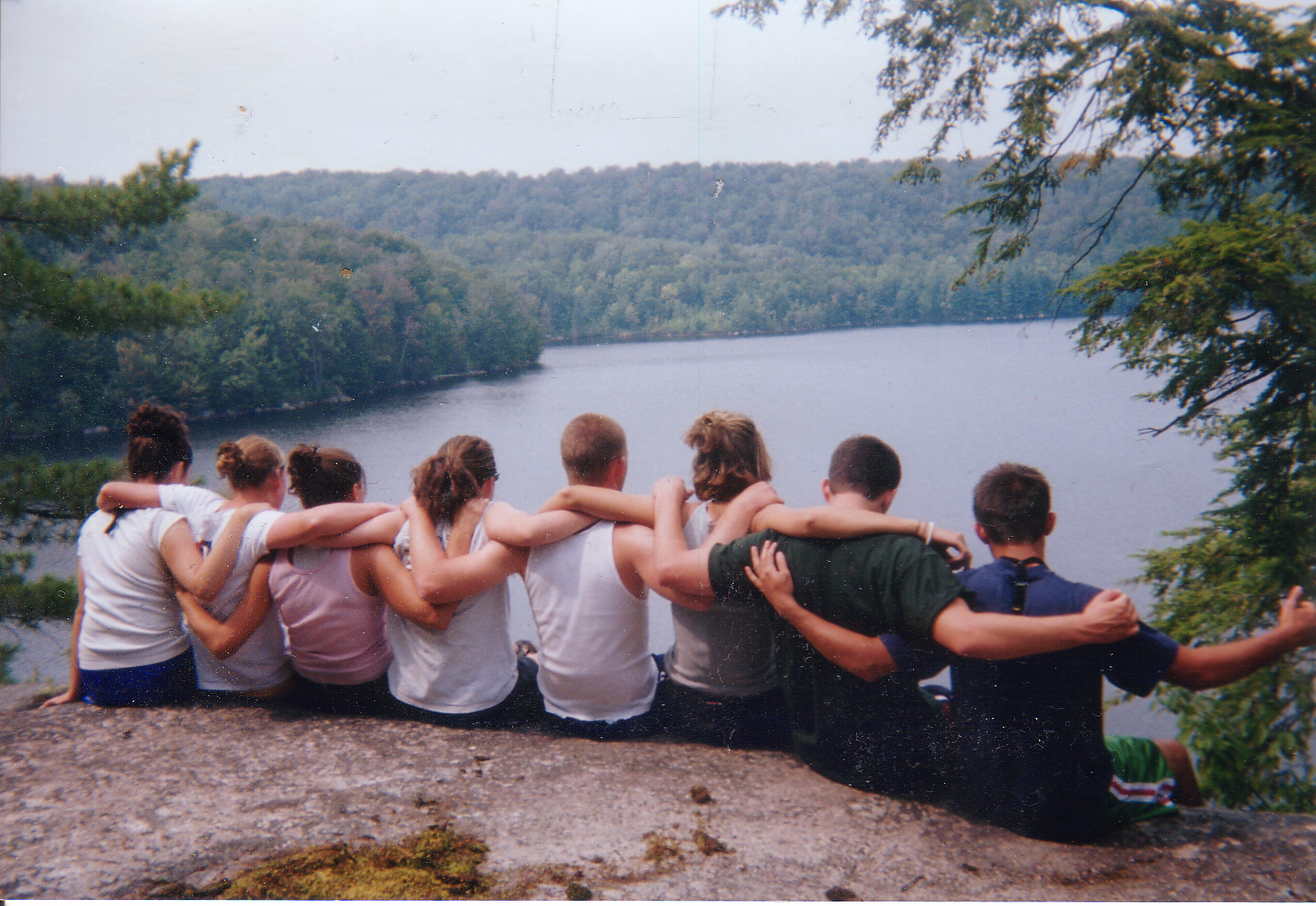 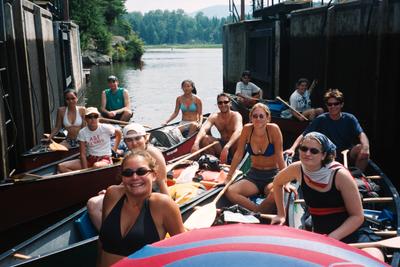 |
I attended Hamilton College in Clinton, New York from 2001 to 2005. I arrived at school early so that I could participate in Adirondack Adventure, which is Hamilton's "nationally acclaimed" 8-day outdoor orientation program for incoming students. I loved my experience so much that I applied to become an "AA" Leader so that I could lead future trips. I was accepted & led orientation trips the following 3 years. Being an AA leader consisted of an intensive training program on team-building initiatives; crisis management; wilderness survival, emergency first aid, & LNT (leave no trace) camping techniques; & last, being certified to work on high and low ropes courses. Throughout the year AA leaders would check in on their participants to make sure they were acclimating to college life & in many cases serve as a sort of mentor for these new students. AA leaders were also frequently contacted by Hamilton professors & asked to facilitate various get-to-know each other activities to help students get to know each other & their professors. Leaders were also asked to work on Hamilton's High & Low Ropes Course whenever outside groups reserved the facility. |
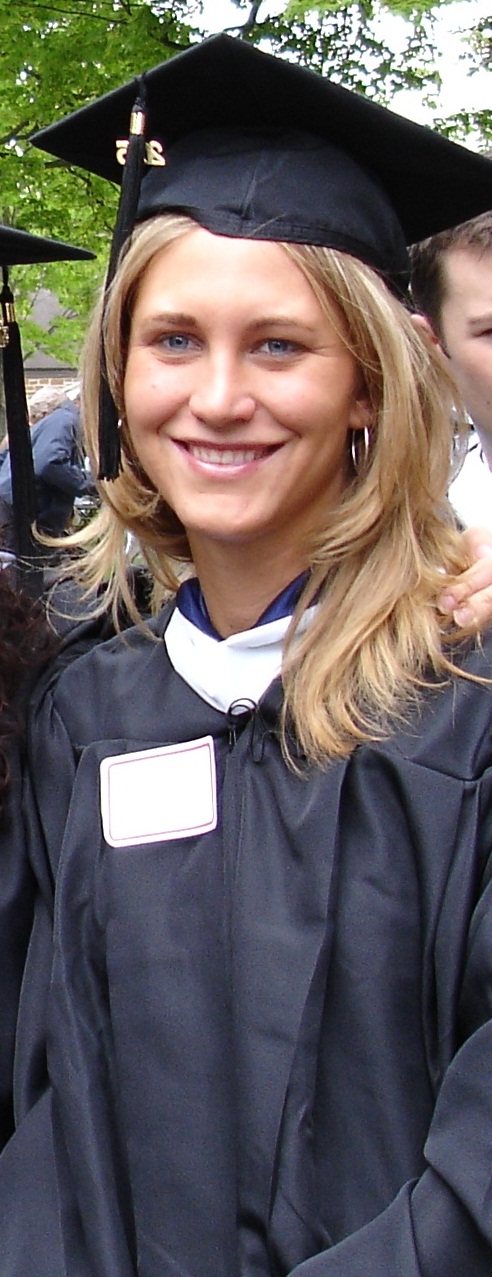
|
|
While at Hamilton, I designed my own major in Environmental Science with a marine concentration. From what I understand this was the first time a science-based Interdisciplinary Concentration had been approved. Upon graduating I was told by my thesis advisor that my hard work had paid off, and that the following Fall Semester Environmental Studies would be an official major for incoming students. |
||
 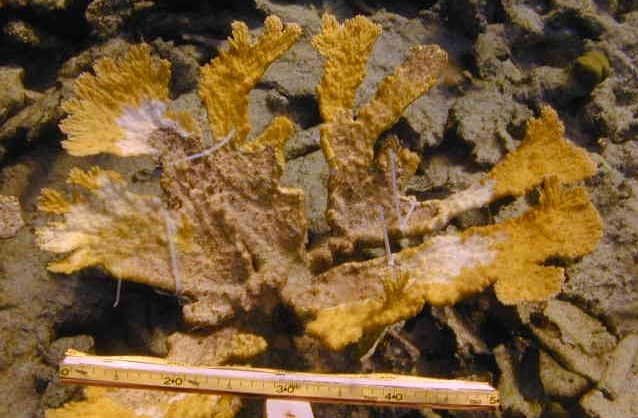 |
I spent the spring semester of my junior year abroad, studying at the School for Field Studies “Marine Resource” program, which was located in the Turks and Caicos Islands. It was during my time there that I first became aware of the declining health of Caribbean coral reefs. I was so alarmed by the rate of decline that I chose to do my semester-long directed research project on diseased Elkhorn corals (Acropora palmata) in the reefs around South Caicos Island. |
|

|
Upon returning from the Turks and Caicos, I received a fellowship from Jug Bay Wetlands Sanctuary, in Lothian, Maryland. |
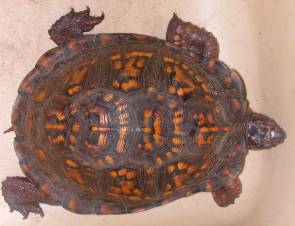 |
|
I spent the summer using telemetry to track Eastern Box turtles,
and then used this information to map the "home
range" of each turtle. At the end of the
internship, the director of the sanctuary was so impressed by
the work I had done, that he agreed to let me analyze the sanctuary’s 9-year dataset as part of
my undergraduate thesis. When I returned to Hamilton that fall, I taught myself how to use ESRI's ArcView 3.3 so that I could use spatial analysis to study the home range and habitat preferences of Eastern Box turtles (Terrapene carolina carolina). Shortly before graduating I was invited to join Sigma Xi, a scientific honors society. In May 2005, I earned a Bachelor of Arts degree from Hamilton College, graduating Cum Laude with an Interdisciplinary Concentration in Environmental Science and Studio Art minor. Upon graduating, I also received Hamilton’s Interdisciplinary Concentration Honor, and was also awarded the Elihu Root Fellowship, which is given to "students who have demonstrated high achievement and special aptitude for scientific research and are planning to pursue graduate degree in the sciences." |
||
| Graduate School at Louisiana State University | ||

 |
I began my doctoral studies in August 2005 in the
School of the Coast & Environment's
(SC&E)
Department of Oceanography & Coastal Sciences (DOCS) at
Louisiana State University (LSU).
My doctoral work was funded through a 4-year Board of Regents Graduate Fellowship, 2 Teaching Assistantships, and 2 Graduate Research Fellowships. |

|
|
My graduate research combines my passion for coral reefs with my interest in geospatial analysis, with my dissertation focusing on developing analytical protocols for studying the spatial nature of coral diseases. 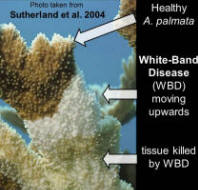
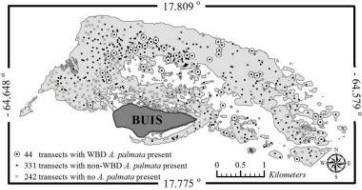
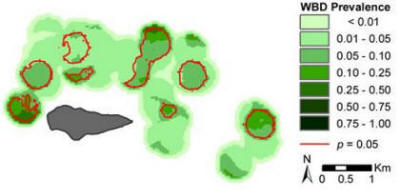 |
||
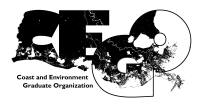 |
In 2010, I was elected president of the Coast
and Environment Graduate Organization (CEGO).
I served as president for one year, during which time I received LSU’s Tom W. Dutton Service Award, a Certificate of Appreciation from the German Embassy for CEGO’s contribution to the Transatlantic Climate Bridge initiative, and the CEGO Leadership and Service Award from LSU’s School of the Coast and Environment. |
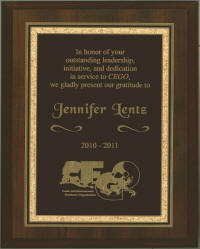 |
|
In May 2012, I received my Doctor of Philosophy degree from the Department of Oceanography and Coastal Sciences with a minor in Geography (with a GIS concentration). |
||
| Education Coordinator at the Aquarium of the Pacific | ||
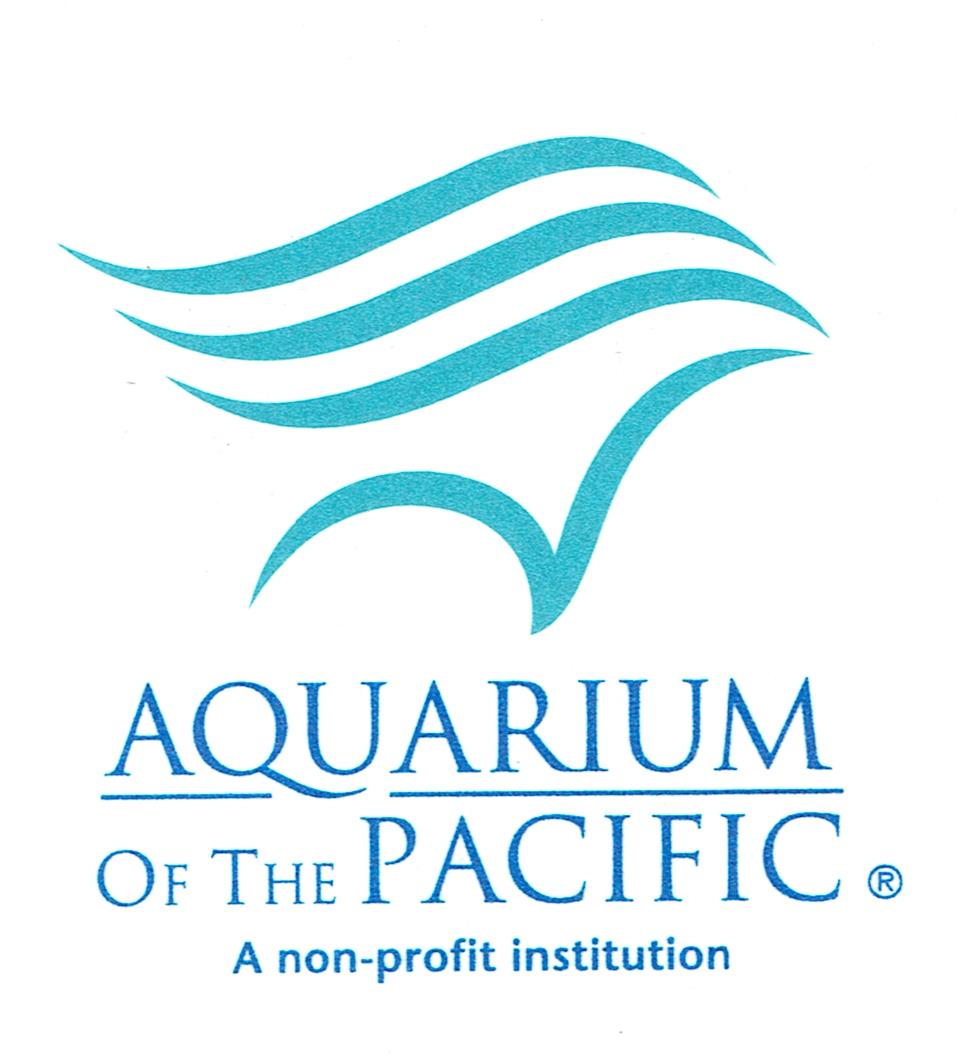  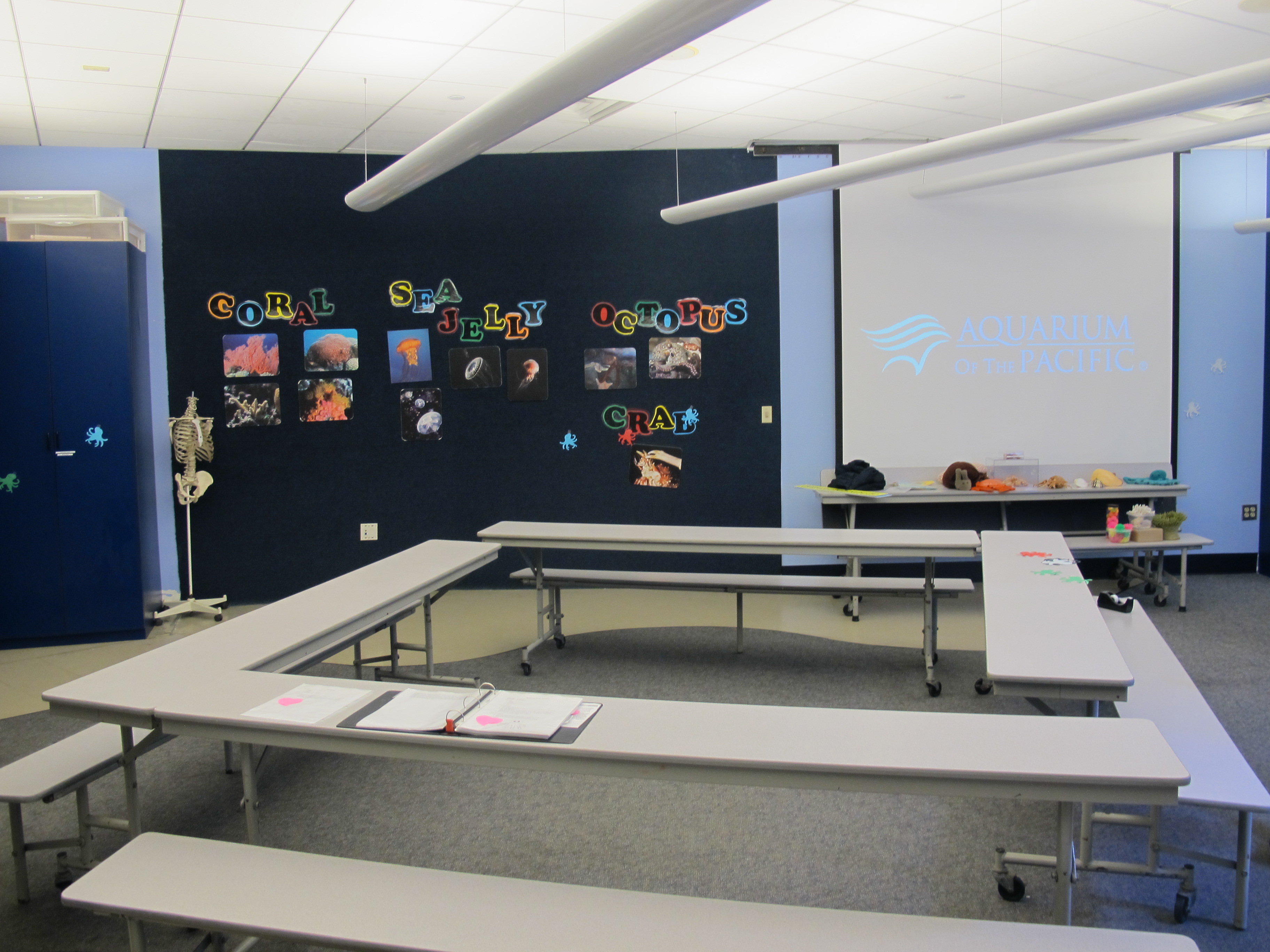 |
I was initially hired as a Marine Science Fellow at the Aquarium of the Pacific (AOP). This was a temporary position designed to provide 6-8 months of work experience and training in all aspects of their Education department. In September 2013, I was promoted to a full-time position as an Education Specialist. In 2015, I was promoted to an Education Coordinator.
My primary responsibilities include:
|
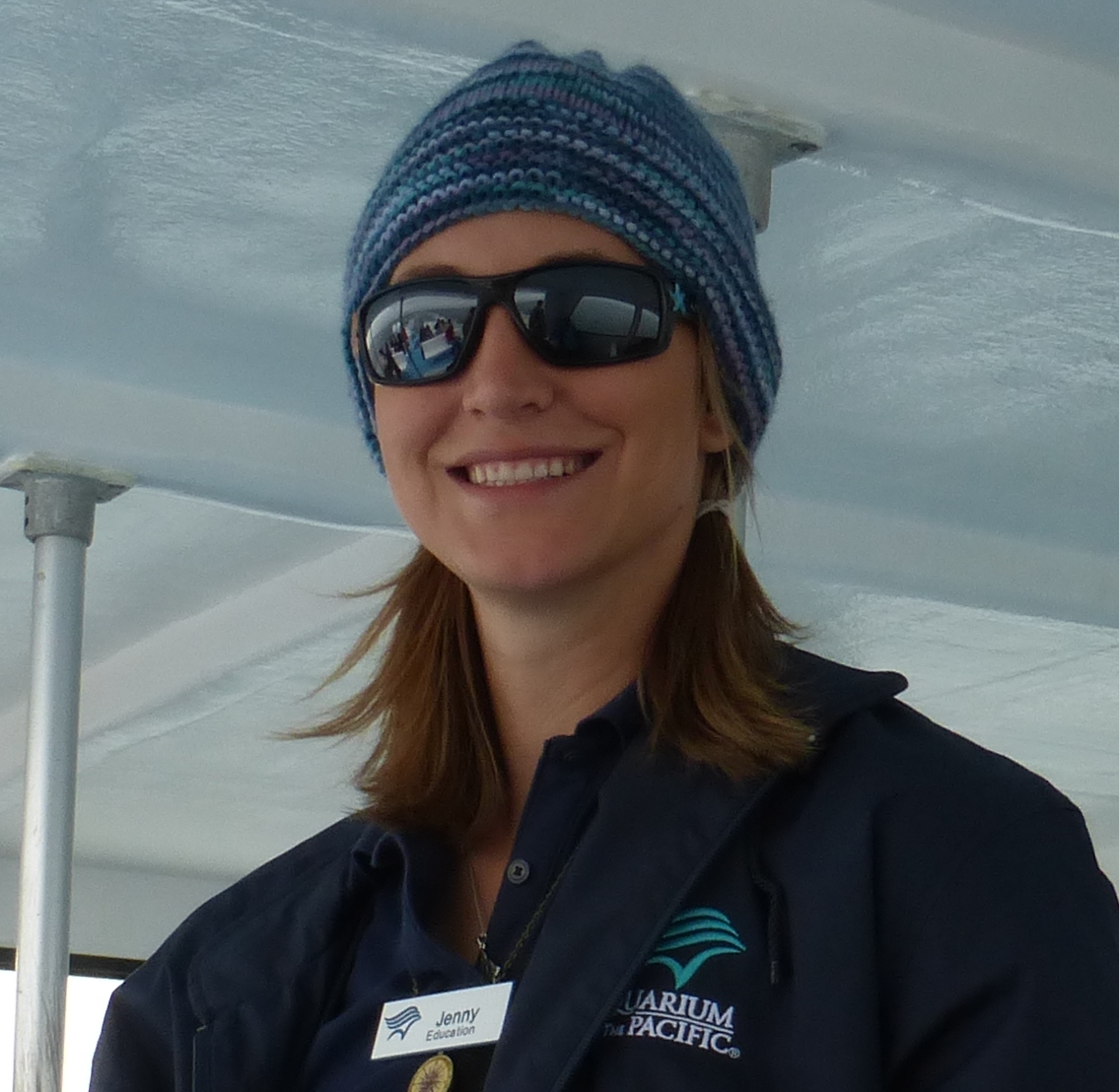  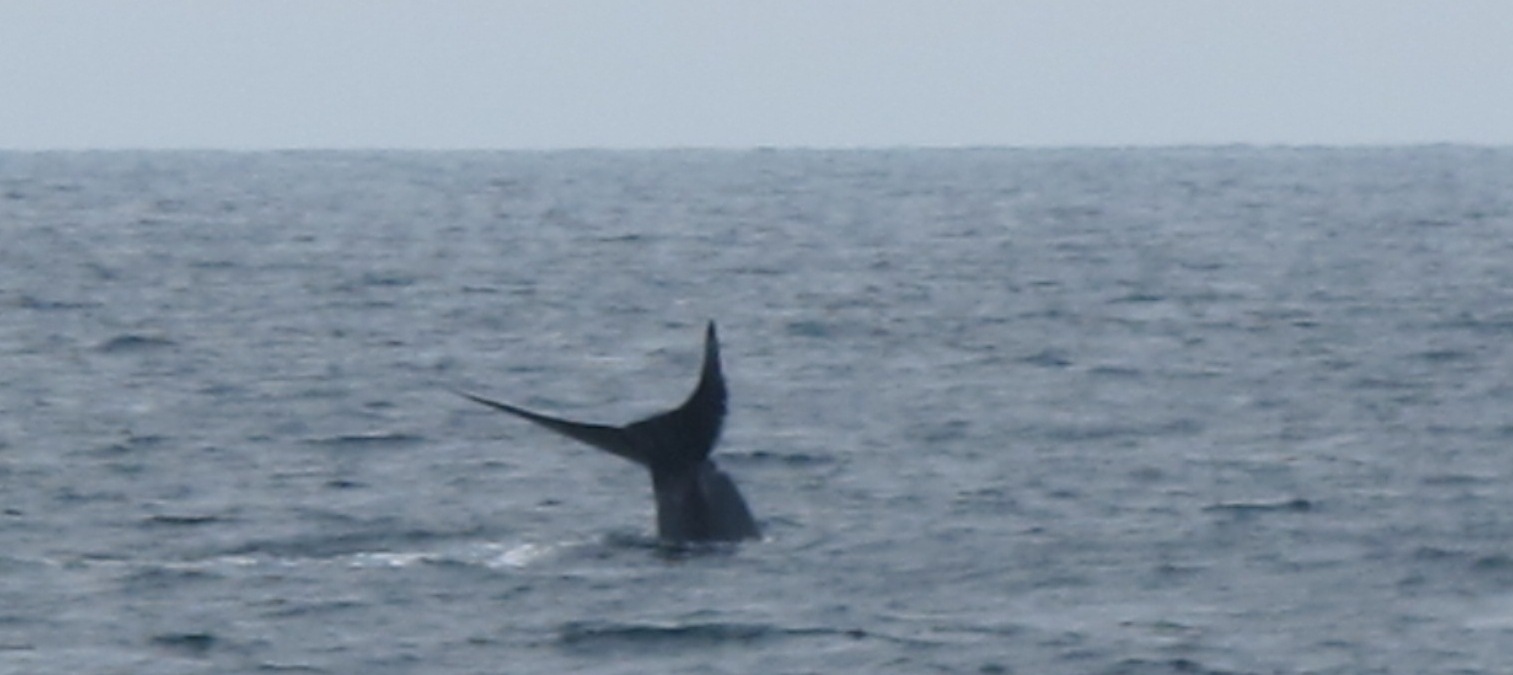 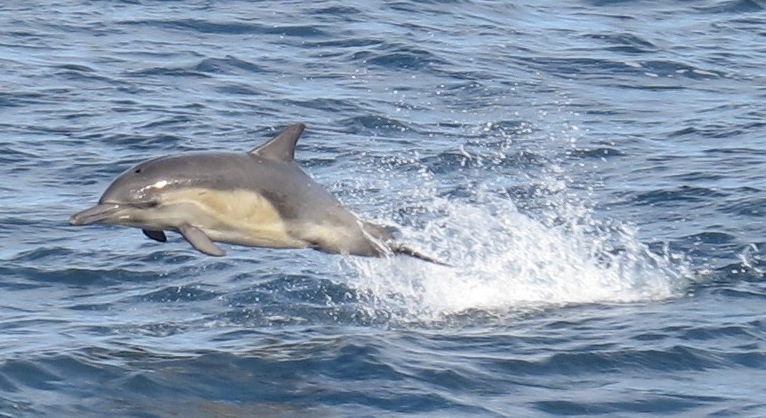 |
|
Program Manager at the Coalition for Clean Air (CCA) |
||
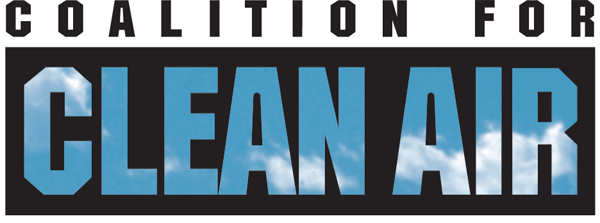  |
In April 2020, I joined the Coalition for Clean Air (CCA) as their new Program Manager.
I currently oversee the development, expansion, and management of CCA's Community Learning Enhances Air Resources (CLEAR) program, which includes a number of community-based air quality sensor networks and STEM education programs in California. I also be assist in policy advocacy, administration, and fundraising. |
|
(this page was last updated on May 13, 2020)